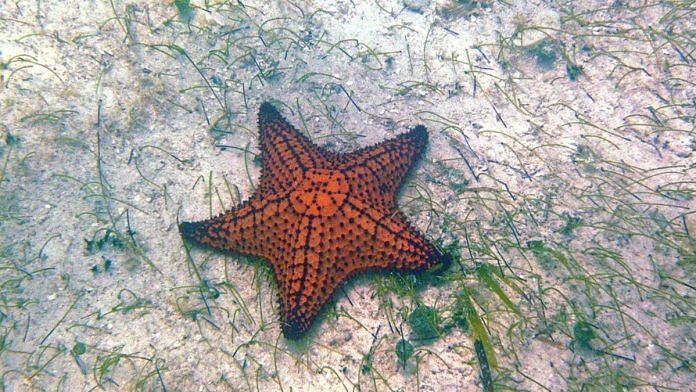New Delhi: The feeling of satiety after you’ve just had a heavy meal is controlled by a hormone that is 500 million years old, biologists from Queen Mary University of London have found. In fact, the hormone isn’t even human-specific and initially evolved in marine animals like starfish.
In their study published Monday in the peer-reviewed journal Proceedings of the National Academy of Sciences (PNAS), the researchers traced the evolution of this neurohormone known as bombesin beyond humans and even mammals. The search led them to bombesin-like hormones even in starfish, which are neither mammals nor vertebrates, and are believed to be 480 million years old.
The scientists concluded that the bombesin neurohormone, which signals the brain to indicate satiety with food, is much older than even vertebrate animals. Along with starfish, they found this hormone’s presence in sea urchins and sea cucumbers, which are other forms of marine animals that evolved long before mammals did.
The scientists searched for the hormone by conducting genome analyses of these animals for either bombesin or bombesin-like hormones, which are usually known as neuropeptides. These are small proteins that can sometimes act as hormones and send signals to the brain the way bombesin does.
“It was a bit like looking for a needle in a haystack,” said professor Maurice Elphick, one of the main authors of the study in a press release by the university. “But eventually we discovered genes encoding a bombesin-like neurohormone in the genomes of starfish and their relatives.”
The study mentions how bombesin was first isolated in 1971 from the skin of a type of frog known as Bombina. The hormone was named bombesin after this frog, and was then injected into mice to understand its effects on mammals.
It was found to regulate feeding times and meal sizes in mice, and other studies have also shown that bombesin acts like a regulator for emotional responses too, like anxiety.
Another interesting feature of bombesin and bombesin-like peptides is their relation with the popular diabetes drug Ozempic. Bombesin is an appetite suppressor hormone and functions in a way similar to Ozempic, which has been shown to reduce fat and lead to weight loss.
In fact, the study mentions that many researchers are looking to use more natural proteins like bombesin to produce diabetes and weight loss drugs to compete with Ozempic.
By unravelling the evolutionary history of bombesin and appetite-regulating hormones and tracing it back to even invertebrates, the researchers from Queen Mary University have opened up different avenues for their use.
The release by Queen Mary University says the starfish equivalent of bombesin could also be used in regulating starfish feeding behaviour in certain regions where they pose a threat to shellfish.
(Edited by Nida Fatima Siddiqui)






